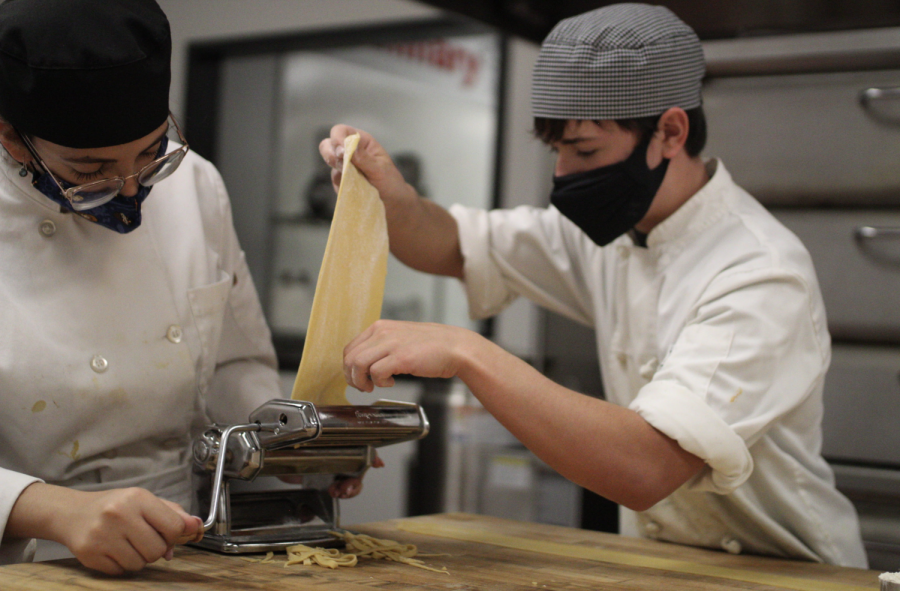Culinary Arts club
The Bowie Culinary program started about 20 years ago, but this year there is a slight change to the elective: There is a new Chef at the head of the program, Chef Kathryn Mayo.
March 4, 2022
Walking down F Hall you can smell the pleasant aroma of fresh meals being cooked by Culinary students. Senior Smith Stevens is excited to get back in the kitchen.
“I was happy to come back to school and to be able to practice my skills as a cook again,” Stevens said. “I was disappointed last year when I couldn’t cook in the kitchens at Bowie for my Culinary class.”
The Bowie Culinary program started about 20 years ago, but this year there is a slight change to the elective: There is a new Chef at the head of the program, Chef Kathryn Mayo.
“I imagine when Chef Weinmiller started working at Bowie, the culinary program had just started up,” Mayo said.
Mayo may be in her first year of teaching culinary, but this is not her first time in Bowie’s kitchen as she is a Bowie graduate.
“I took Nutrition at UT. I took culinary in high school, and that’s all my cooking experience,” Mayo said.
Although the COVID quarantine has affected many trying to get back to normal life, the Culinary kitchen continues to flourish. The only problem is that the spots for these classes get filled up too quickly for all students that want to join the Culinary program, limiting student’s access to the elective.
“Because the Nutrition class is full to the brim with 30 kids, I would like to teach another double blocked Culinary beginning or advanced class,” Mayo said.
Overcrowding isn’t the only problem with the Culinary Clubs and classes, there are other physical problems with things not working as intended to.
“There are physical problems with the old school building, with no hot water, things breaking down, and having to be fixed,” Mayo said. “Also, the classes are too crowded to manage students effectively and give them the correct one-on-one teaching to be able to cook.”
Although the program may have complications, students still learn a lot and benefit from taking Culinary.
“The program treats me well,” Stevens said. “I was able to find some friends from the program by working in groups with my classmates.”
The class is operated by dividing the students into small groups, with each group making one component of the meal. This allows for productive teamwork, without the concern of ‘too many cooks in the kitchen’.
Lucas Keyes, a former Culinary student, believes that Culinary is more than just cooking.
“Culinary arts involves the entire act of cooking which some people love, including me,” Keyes said. “Culinary involves practice and skill dedicated to cooking. Anyone can cook soup, but not everyone can make fancy homemade cooked meals.”
Many students find that they wish they started cooking earlier into their childhood, so they could spend more time in the kitchen focused on making challenging dishes, instead of making sure they don’t injure themselves.
“I wish I practiced more with basic Culinary skills,” Keys said. “If I did, I wouldn’t accidentally cut myself while chopping vegetables.”
After being in the Culinary program at Bowie for almost three years, Stevens has suggestions to make the club grow bigger and become an even bigger elective.
“I think the class size should be increased. Many students miss the opportunity to get into Bowie’s Culinary program, which is one of the biggest electives/clubs at Bowie,” Stevens said.
Keyes thinks the club could gain more popularity which would result in more funding for the program.
“We could entice sophomores and freshmen to join Culinary by giving away the extra food the upper culinary classes make,” Keyes said.










